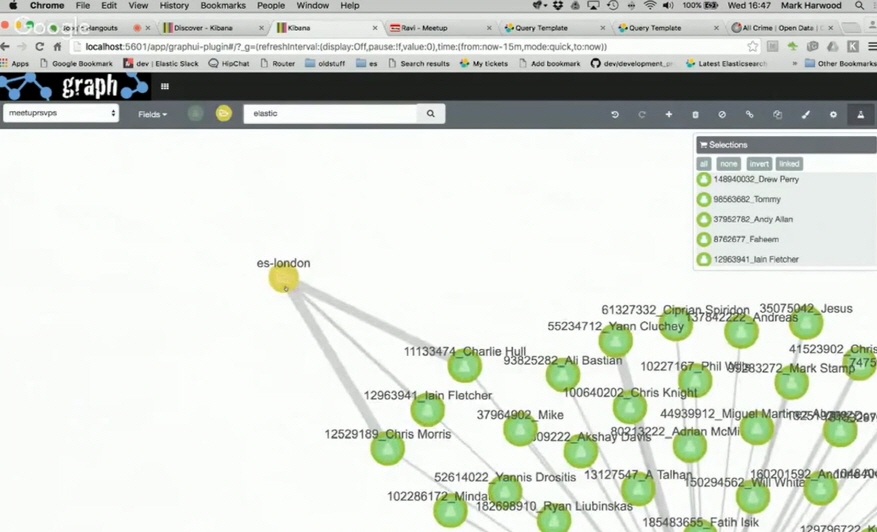MOUNTAIN VIEW, CA and AMSTERDAM, THE NETHERLANDS, Mar. 30 (Korea Bizwire) – Elastic today unveiled Graph, a new extension for Elasticsearch and Kibana that allows anyone to uncover, understand, and explore the relationships that live in their data. By combining the speed and relevance-ranking of search with graph exploration, Graph opens up a whole host of new use-cases with the Elastic Stack.
“We built Graph to help you ask new types of questions about the data you store in Elasticsearch,” said Steve Kearns, Sr. Director of Product Management at Elastic. “By looking at the relationships in your data through the lens of relevance, it becomes easy to answer questions that previously would involve multiple systems, batch jobs or machine learning.”
Graph Enables New Use Cases for the Elastic Stack
When you store data in Elasticsearch — products, users, documents, logs — this data often contains references or properties that represent connections between objects, entities, people, or machines. The best way to explore these connections is to see them, which Graph provides via a Kibana plugin. Like everything at Elastic, this UI is built on a simple, but powerful API that leverages Elastic’s deep experience in relevance ranking to surface the most meaningful connections that live in your data. This unique approach to graph exploration opens a wide range of new use-cases for the Elastic Stack, without requiring new index formats, by allowing users to query their existing data in new ways.
Graph makes it easy to answer complex questions and address use-cases such as behavioral analysis, fraud, cybersecurity, drug discovery, personalized medicine, and to build personalized recommendations based on continuous real-time data. Graph automatically identifies the most important connections, separating the signal from the noise by employing relevance ranking specific to each query. Because it is built on Elasticsearch, Graph benefits from high scalability and near-real-time data availability, enabling answers that evolve as your data changes.
Graph Brings Relevance to Relationship Exploration
When data is added to Elasticsearch, the indexing process tracks and counts the values in each field of the document, updates global frequencies, and prepares the data for a wide range of queries. These statistics are used to perform relevance ranking for search and efficiently summarize the data in Elasticsearch aggregations. With Graph, the Elastic Stack uses these statistics in new ways — first to identify relationships within and across sets of documents, and then to prioritize the most relevant relationships for the given query.
In contrast, traditional graph techniques are based on a simple count of the frequency of a given relationship. This approach has the drawback that elements with the most connections — the Shawshank Redemption in movie recommendation data or Starbucks in credit card purchase data — are returned as the most important. With Graph in Elasticsearch, relevance is calculated by correlating the significance of each relationship in comparison to global averages, bringing back the important results, and avoiding frequent connections.
“Graph is an excellent example of the limitless possibilities within our products and how we strive to make it as easy as possible for our users to leverage the power of the Elastic Stack,” said Shay Banon, Co-Founder and CTO of Elastic. “I am proud to see our company continue to innovate, and I can’t wait to see the new ways in which our customers will adopt Graph to solve really challenging problems and use cases.”
Learn More
About Elastic
Elastic is the world’s leading software provider for making structured and unstructured data usable in real-time for use cases like search, logging, and analytics. Founded in 2012 by the people behind the Elasticsearch, Kibana, Logstash, and Beats open source projects, the Elastic Stack, X-Pack and Elastic Cloud have had more than 50 million cumulative downloads to date. Elastic is backed by Benchmark Capital, Index Ventures, and NEA with headquarters in Amsterdam and Mountain View, California, and offices and employees around the world. To learn more, visit www.elastic.co.
Media Contacts
Janis Ma
Elastic Communications for APAC
pr@elastic.co
+852 61170902
Source: Elastic via Marketwired








